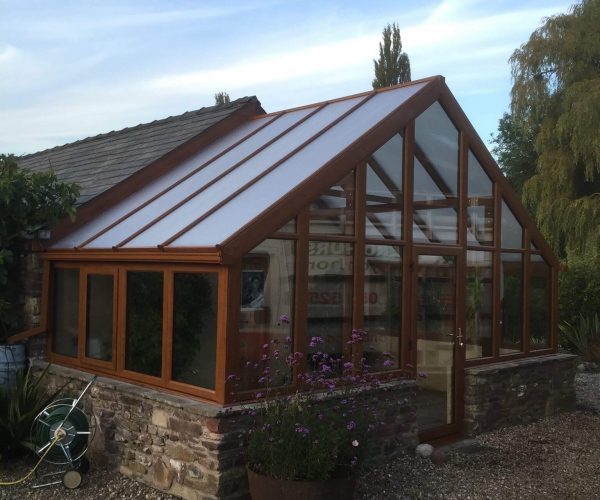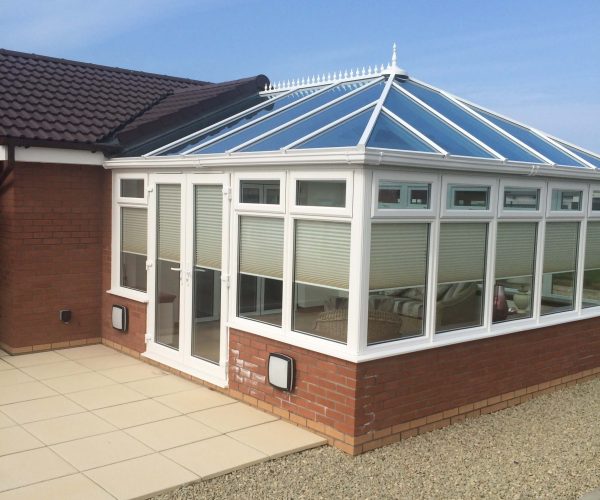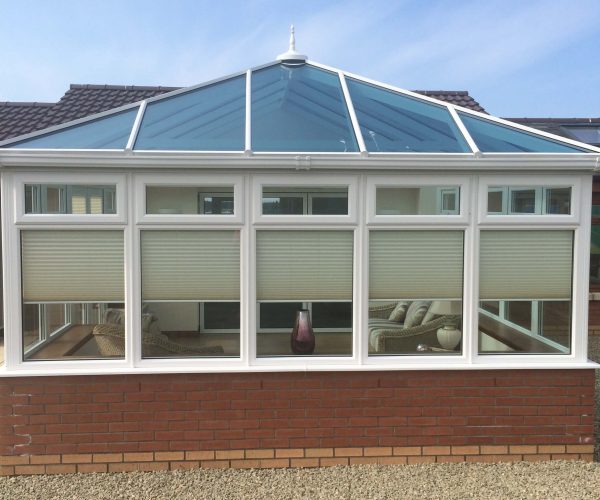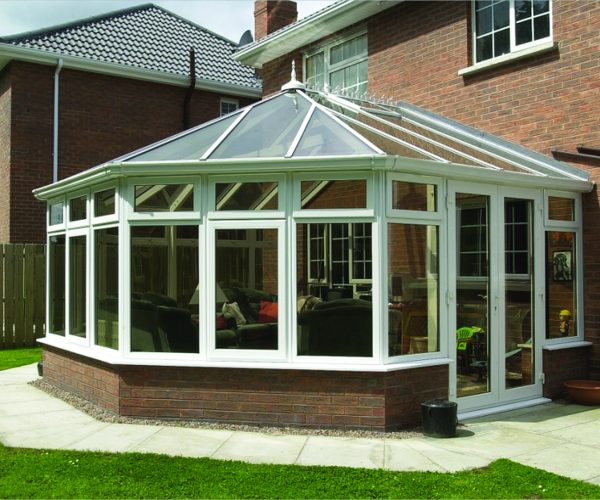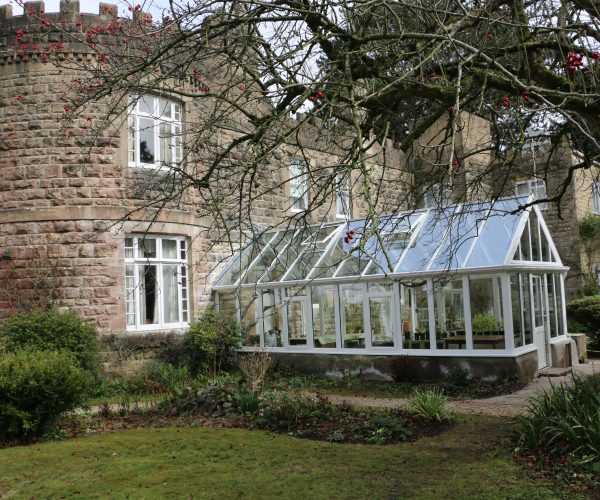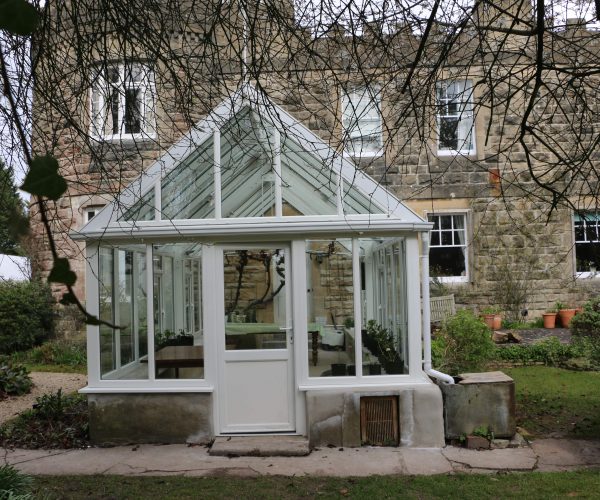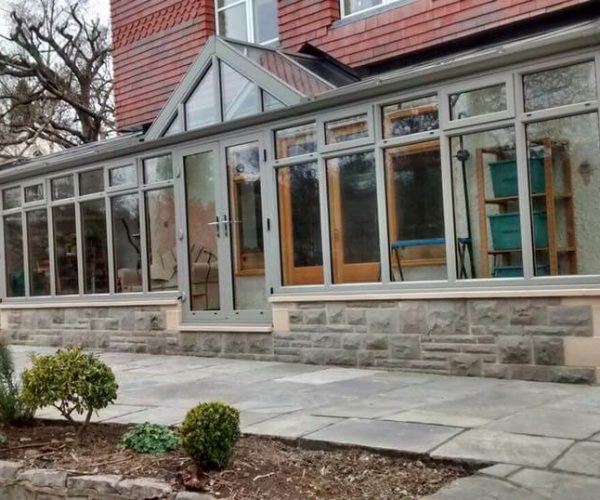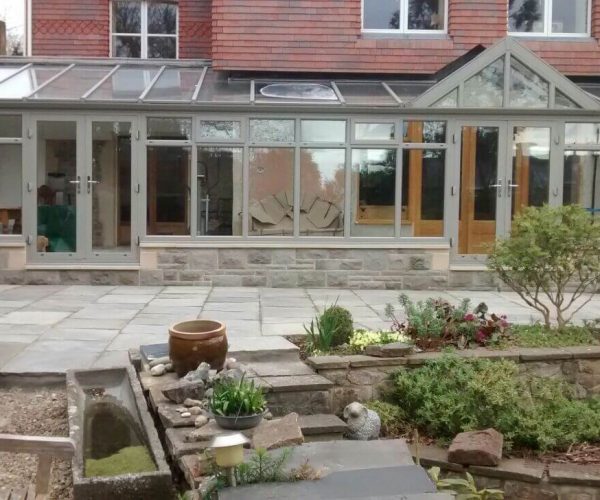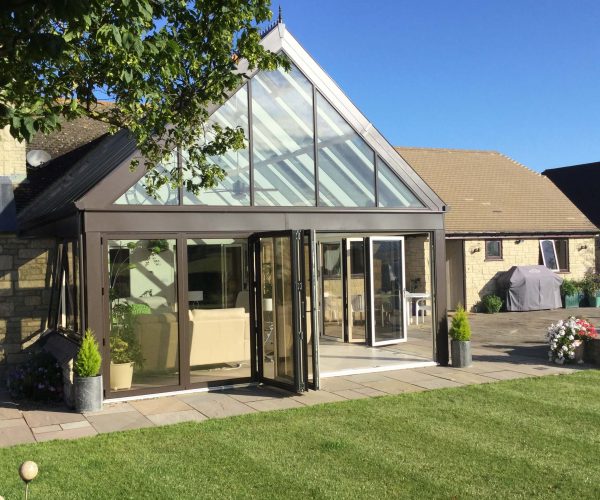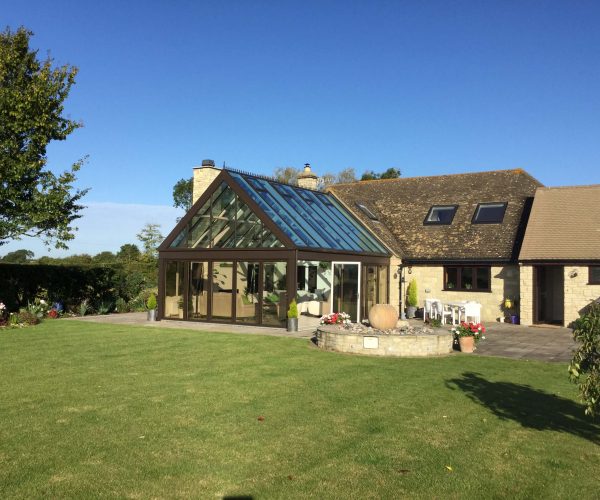
Conservatories
Lean To Conservatory
The utilisation of a boxgutter allows the addition of a Victorian style conservatory to an even wider range of dwellings.
A boxgutter allows the conservatory to abut the existing house wall or to simultaneously drain the existing house roof and the conservatory roof. This design is particularly suitable to properties that have height restrictions that would foul the ridge of a standard Victorian or Edwardian conservatory. It is also perfect for bungalows where the roof soffit is at a low height.
Victorian Conservatory
An essentially English design that incorporates a multi-faceted bay end for superb all-round views.
In effect, a Victorian conservatory is much like an Edwardian conservatory but with one end which incorporates angled or curved facets. This is the most popular style of conservatory and has distinguishing architectural features such as a steeply pitched roof incorporating an ornate ridge and finial detail.
Style Variations include:
3-facet Victorian in which the bay has three main windows, widely angled for maximum space. This style is suitable for the majority of locations.
5-facet Victorian with five main bay-front windows, creating a pleasing period profile with a subtle rounded appearance, offering the ideal blend of space and classical looks.
Double Hipped Conservatory
The utilisation of a boxgutter allows the addition of a Victorian style conservatory to an even wider range of dwellings.
A boxgutter allows the conservatory to abut the existing house wall or to simultaneously drain the existing house roof and the conservatory roof. This design is particularly suitable to properties that have height restrictions that would foul the ridge of a standard Victorian or Edwardian design. It is also perfect for bungalows where the roof soffit is at a low height.
P-Shape Conservatory
Combining a mix of lean-to and Victorian styles, a ‘P-shape’ conservatory is the ideal choice for a larger conservatory.
By blending two styles into one you can create a conservatory big enough to offer two separate living areas – e.g. a dining room and living room.
A P-shape is ideal for creating maximum space whilst maintaining a sense of proportion with your house. The Victorian section helps to create the P-shape that gives the style its name and can be built as either a 3 or 5 panel design.
T-Shape Conservatory
The T-shape is ideal for larger properties with a long wall on which to build the conservatory.
A T-shape conservatory allows for maximisation of space and gives an attractive symmetrical appearance. A central projection highlights the shape and can create a ‘porch’ effect to the conservatory if this is where the doors are placed.
Lantern Conservatory
The Lantern is the ultimate in conservatory design and can be attached to your property or built as a stand-alone outbuilding.
The original conservatory style, often referred to as an Orangery, now brought up-to-date with modern window and conservatory roof technology.
Choosing a lantern style conservatory ensures drama and style representing the grandeur of times gone by. The 2-tiered effect adds a new dimension to your conservatory and the extra ceiling height adds to the feeling of light and space. Lanterns are typically suited to older style properties and are often chosen for swimming pool enclosures.
Edwardian Conservatory
Also known as the Georgian, this classic conservatory is square or rectangular, with stylish lines.
Edwardian conservatories have straight and square profiles without faceted ends. Edwardian conservatories offer a clean and simple look with strong bold lines. The full square corners on the Edwardian style maximises the interior floor area as opposed to the more rounded corners associated with a Victorian design.


